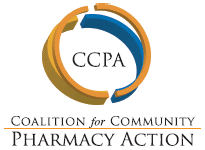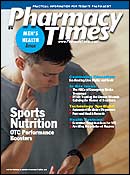Publication
Article
Pharmacy Times
CCPA Speaks Out: Track-and-trace Legislation Questioned
Author(s):
Ms. Khani and Mr. Sewell are copresidents of the Coalition for Community Pharmacy Action.


Julie Khani, Vice president of federal healthcare programs at NACDS
Charles Sewell, Senior vice president of government affairs at NCPA

The past decade has witnessed a vast expansion of e-commerce on the Internet and also an increase in drug counterfeiting in global markets. A recent study from Europe shows that 94% of online "pharmacies"* do not have a named, verifiable pharmacist. More than 90% do not require a prescription, and a staggering 62% of the medicines purchased online through these rogue Internet sites are counterfeit or substandard.
The General Counsel for Internet domain?registration giant GoDaddy.com recently testified before the House Judiciary Committee that the troublesome problem of rogue illegitimate Internet sites selling drugs is growing. "Our service alone has shut down over 6000 illegitimate 'pharmacy' Web sites in just the past 6 months."
Although the problem of counterfeit drugs through the Internet is driven by unlicensed, rogue Internet "pharmacies,"*the Internet has long been held sacred by some lawmakers, and any form of regulation that properly targets the access to these sites on the Internet has been a nonstarter. Accordingly, although other effective approaches are available, such as certification of the normal distribution channel in the United States, it comes as little surprise to many that Congress would address the perceived counterfeit drug problem in the United States by leveling a massive unfunded mandate to track and trace all drugs in the drug supply chain including on community pharmacies.
A bill, Safeguarding America's Pharmaceuticals Act of 2008 (HR 5839), introduced by Reps Steve Buyer (R, IN) and Jim Matheson (D, UT), mandates a nationwide track-and-trace system that requires manufacturers, wholesalers, and pharmacies to document all prescription drug transactions by scanning and logging a unique serial code for every unit of prescription drugs transferred.
While only a few prescription drugs are targets of counterfeiters, HR 5839 requires complete tracking of all prescriptionmedicines. The undeniable complexity and cost of this mandate is made even more perplexing because a single technology has not even been identified and field tested, leaving the field wide open for a compatibility nightmare between suppliers and exponential cost increases, as multiple scanners and systems would need to be set up.
As some in Congress were proceeding misguidedly on the issue, the Coalition for Community Pharmacy Action launched a study—the results of which are staggering.
The June 2008 findings indicate that a congressional mandate of track and trace is estimated to cost each independentpharmacy $84,102; a midsized chain about $103,000 per store; and a large chain pharmacy up to $112,000 per location with an additional $2.2 million per distribution center. These costs are impractical for pharmacy in any timeframe, let alone considering what we have faced in the past 10 years.
Before presenting the detailed and in-depth cost analysis, the report properly asked questions about incidents of counterfeit drugs in US pharmacies as it evaluated the anticipated costs with a federal action relating to a track-and-trace system. Virtually no instances were documented of counterfeit drugs reaching pharmacies in the United States via community pharmacy in the past 4 years. Considering prescription volume in the billions, this safety record should instill confidence in the steps taken by community pharmacy and our supply chain partners to secure the US drug distribution supply chain—not precipitate a massive financial outlay to satisfy a misguided government regulation.
Our patients' safety is our first priority, and we support legislation that legitimately achieves that goal. As health care affordability and access are also critical, we cannot support legislation that needlessly drives up costs and undermines access.
As if we were not facing enough challenges already, we will continue to negotiate this and other issues on Capitol Hill. On the issue of counterfeit drugs, we hope to steer Congress in a sensible direction that actually addresses the root of this problem without leveling an unfunded mandate on community pharmacy. We will keep you posted as the situation develops.
*Illegitimate Web sites pedaling fake drugs cannot be called pharmacies any more than a corner drug dealer could be called a pharmacist. One major difference: While there are serious penalties for even attempting to buy illegal drugs on a street corner, virtually no consequences exist for illegally acquiring prescription medication online. The other difference, it seems, is that the street drugs are more likely to be real. Congress should take notice of where the real problem with counterfeiting exists.







